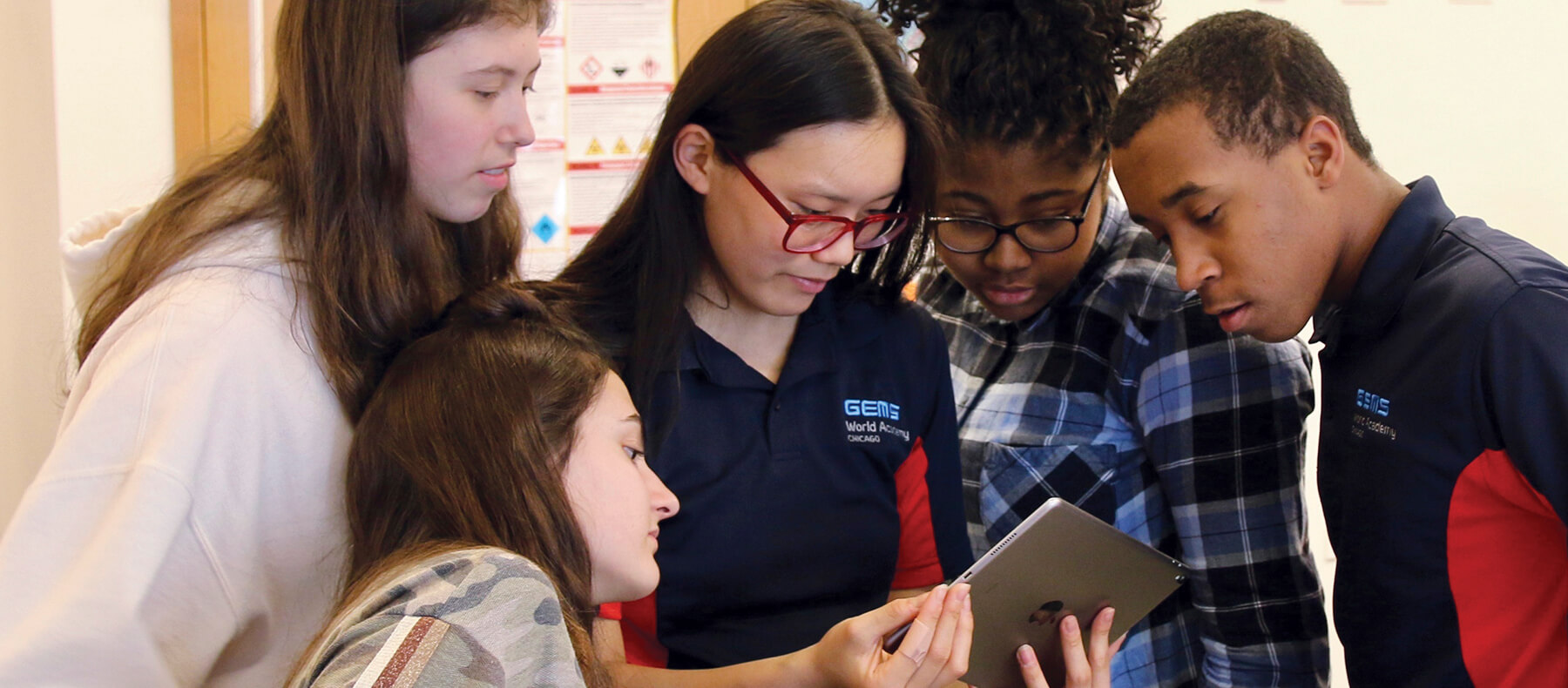
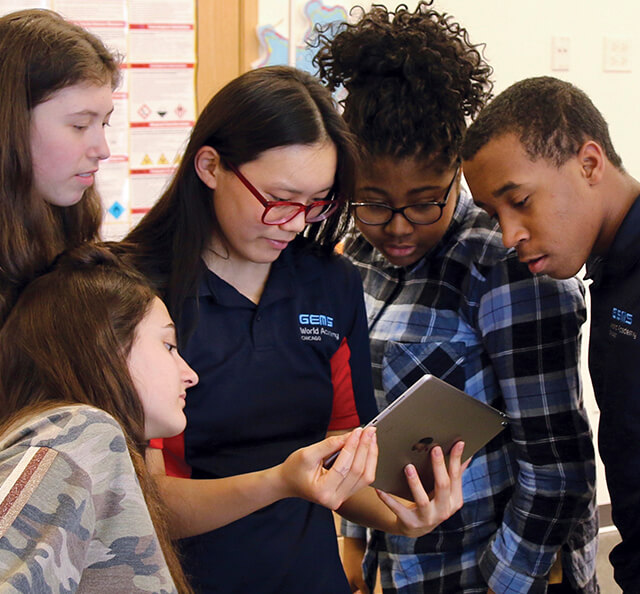
GRADES 9-12
Upper School Curriculum
Curriculum
Developing Independence & Confidence
MYP emphasizes intellectual challenge, encouraging students to make practical connections between their studies and the real world, and to grow comfortable taking risks, preparing them for success in further study and in life.


Take A Closer Look
Videos

Spotlight on the Diploma Program
Upper School at GEMS
Upper school, grades 9-12, encompasses the last two years of the Middle Years Program (MYP) and the IB Diploma Program. The DP is respected by colleges and universities across the world, as it develops students who have excellent depth and breadth of knowledge, flourish emotionally, physically and ethically, study at least two languages, and explore the nature of knowledge in the program’s unique theory of knowledge course. At GEMS, field studies opportunities for Upper School students extend far beyond the reaches of Chicago. Students meet and host GEMS Dubai and GEMS Singapore students. They travel to French- and Spanish-speaking countries, where they practice communicating across cultures. They study water issues and local issues in Costa Rica. The DP curriculum is comprised of the Diploma Program core and six subject groups.
For more information and an overview of the Middle Years Program, please visit our Middle School Curriculum page.
GRADES 11 & 12
The Diploma Program Core

Theory of Knowledge
Creativity, activity & service
The Extended Essay
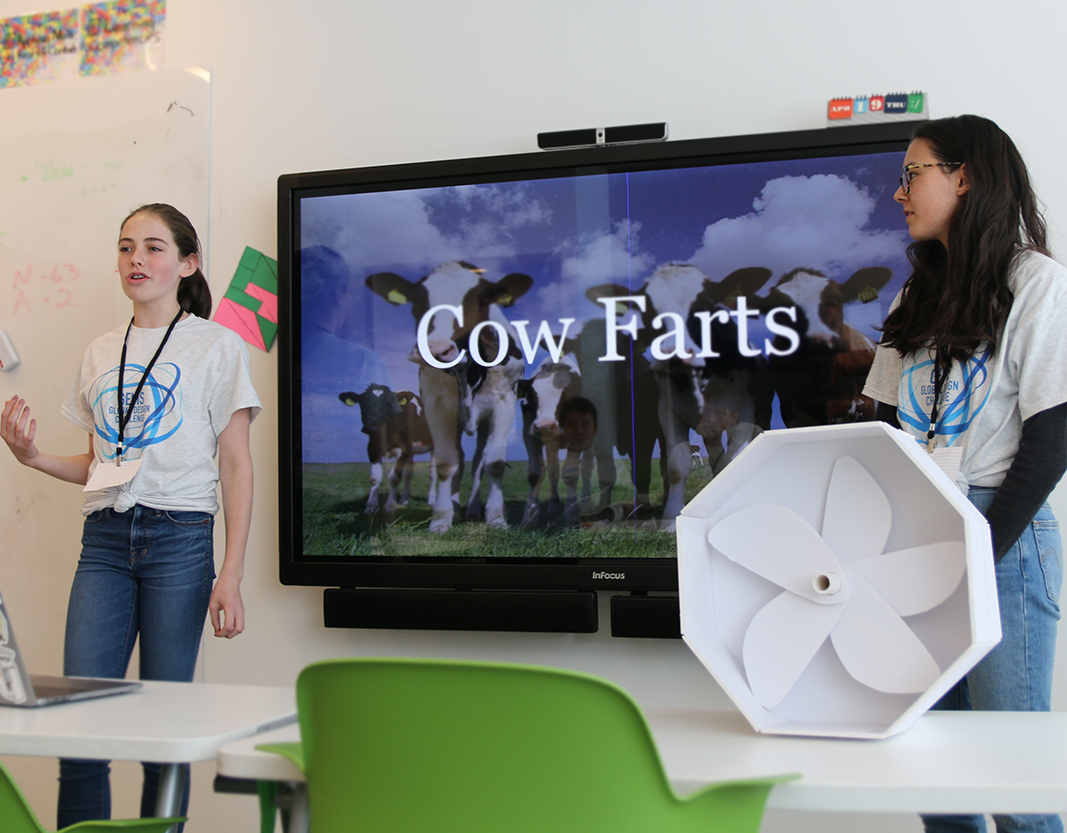
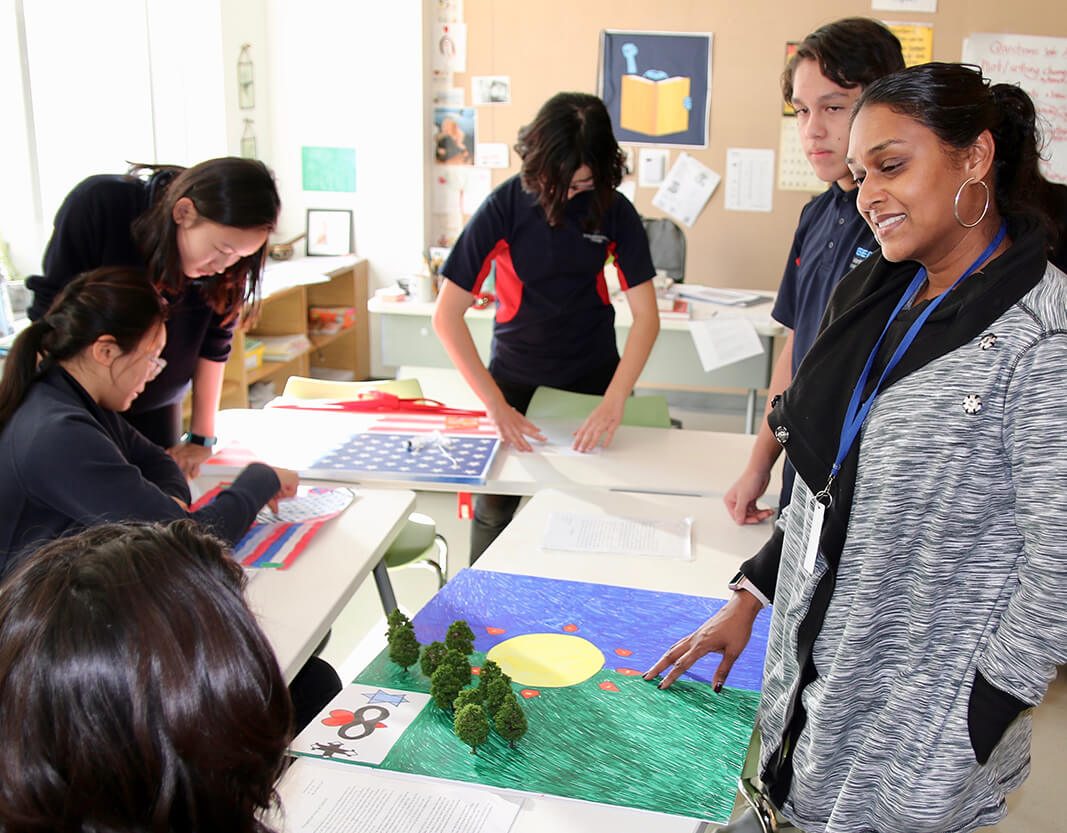
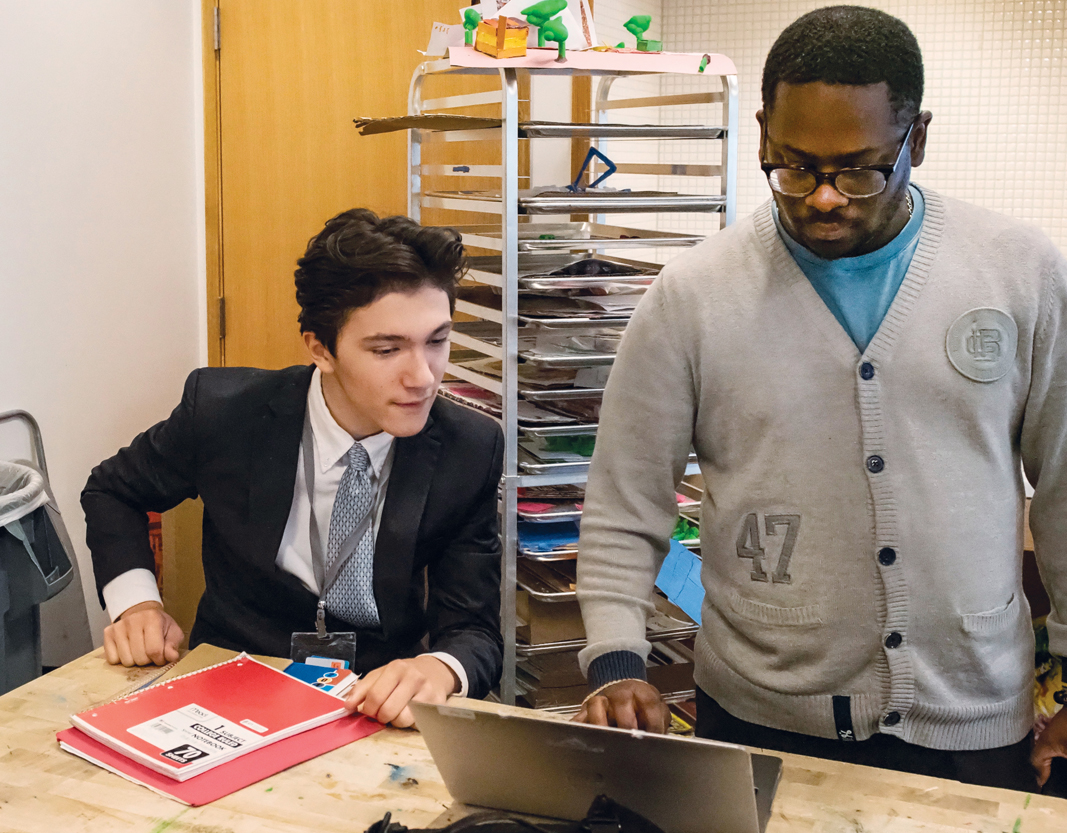
Theory of Knowledge
Theory of knowledge, in which students reflect on the nature of knowledge and on how we know what we claim to know.
Read More on the IBO WebsiteCreativity, activity & service
Creativity, activity & service, in which students complete a project related to those three concepts.
Read More on the IBO WebsiteThe Extended Essay
The extended essay, which is an independent, self-directed piece of research, finishing with a 4,000-word paper.
Read More on the IBO WebsiteWELL-ROUNDED ACADEMICS
Subject Areas
We tailor our programs to our students, giving them ways to highlight their strengths and interests and providing more than typical high school offerings. Students explore courses like epidemiology, global politics, and environmental systems and societies.

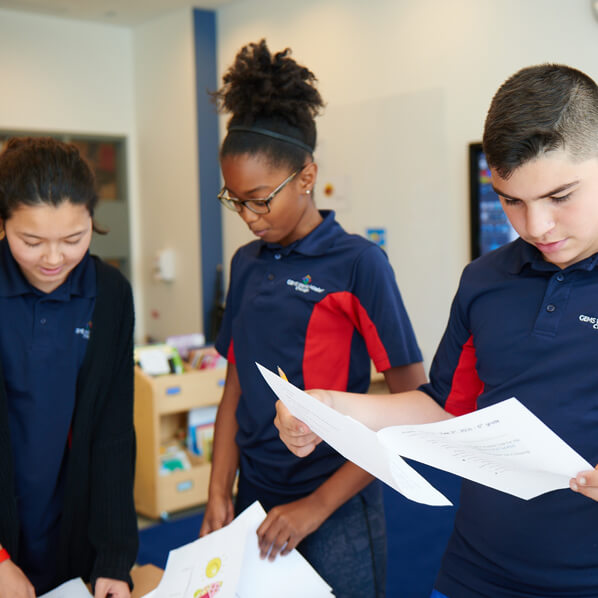
Math in grades 9 and 10 is often taught in mixed-grade classes. We offer:
- Algebra I (grade 9 only): a continuation of the complex topics covered in grade 8 math.
- Geometry/Statistics: In this course, students explore the basics of Euclidian planar geometry, using the classical techniques of compass-straight edge construction and logical proof from postulates and definitions. The second half of this course focuses on statistics. Students will learn the basics of the discipline and to think critically about population sampling methods, hidden variables, causal inferences, fat tails, reliability of metrics, and researcher and reporter bias.
- Algebra II/Trigonometry: This course deepens and extends algebra and trigonometry such that students, at the course's completion, will be prepared to take on the challenges of calculus. Topics coved include polynomial and rational functions, trigonometric identities, normal distribution, standard deviation, combinatorics, and more

Math in grades 9 and 10 is often taught in mixed-grade classes. We offer:
- Geometry/Statistics: In this course, students explore the basics of Euclidian planar geometry, using the classical techniques of compass-straight edge construction and logical proof from postulates and definitions. The second half of this course focuses on statistics. Students will learn the basics of the discipline and to think critically about population sampling methods, hidden variables, causal inferences, fat tails, reliability of metrics, and researcher and reporter bias.
- Algebra II/Trigonometry: This course deepens and extends algebra and trigonometry such that students, at the course's completion, will be prepared to take on the challenges of calculus. Topics coved include polynomial and rational functions, trigonometric identities, normal distribution, standard deviation, combinatorics, and more

As part of the Diploma Program, students in grades 11 and 12 take a two-year math course, retaining the same teacher for each of the courses when progressing from grade 11 to 12.
Mathematics Applications & Interpretation emphasizes the development of mathematical skills and concepts necessary for describing our world and solving practical problems. Students will harness the power of technology as they explore and generate their own mathematical models. Students are also encouraged to appreciate the international dimensions of mathematics and the multiplicity of its cultural and historical perspectives.
Topics covered include: number sense and algebra, functions, geometry and trigonometry, statistics and probability, and calculus. We emphasize the modeling of functions and real-life scenarios.

As part of the Diploma Program, students in grades 11 and 12 take a two-year math course, retaining the same teacher for each of the courses when progressing from grade 11 to 12.
Mathematics Applications & Interpretation emphasizes the development of mathematical skills and concepts necessary for describing our world and solving practical problems. Students will harness the power of technology as they explore and generate their own mathematical models. Students are also encouraged to appreciate the international dimensions of mathematics and the multiplicity of its cultural and historical perspectives.
Topics covered include: number sense and algebra, functions, geometry and trigonometry, statistics and probability, and calculus. We emphasize the modeling of functions and real-life scenarios.

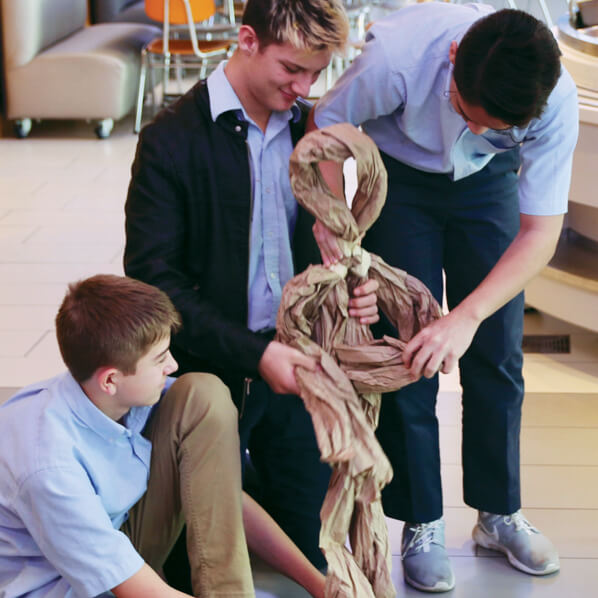
Students in grades 9 and 10 may choose to concentrate in one or more of the performing or visual arts, or design. Open studio may all be selected as 1 or 2 semester explorations.
This course will allow students to learn hard skills such as sketching, programming, and digital design, while also engaging in soft skills such as creativity, collaboration, critical thinking, and problem finding/solving. Several types of writing will be used throughout the course. Inquiry research, design requirements, and reflective writing, with an emphasis on mechanics and effective use of word choice, syntax and sentence structure. Students will work on mobile app design, woodworking and design thinking. The course provides opportunities for students to enter design competitions and deepen their passion for innovation.

Students in grades 9 and 10 may choose to concentrate in one or more of the performing or visual arts, or design. Open studio may all be selected as 1 or 2 semester explorations.
This course will allow students to learn hard skills such as sketching, programming, and digital design, while also engaging in soft skills such as creativity, collaboration, critical thinking, and problem finding/solving. Several types of writing will be used throughout the course. Inquiry research, design requirements, and reflective writing, with an emphasis on mechanics and effective use of word choice, syntax and sentence structure. Students will work on mobile app design, woodworking and design thinking. The course provides opportunities for students to enter design competitions and deepen their passion for innovation.


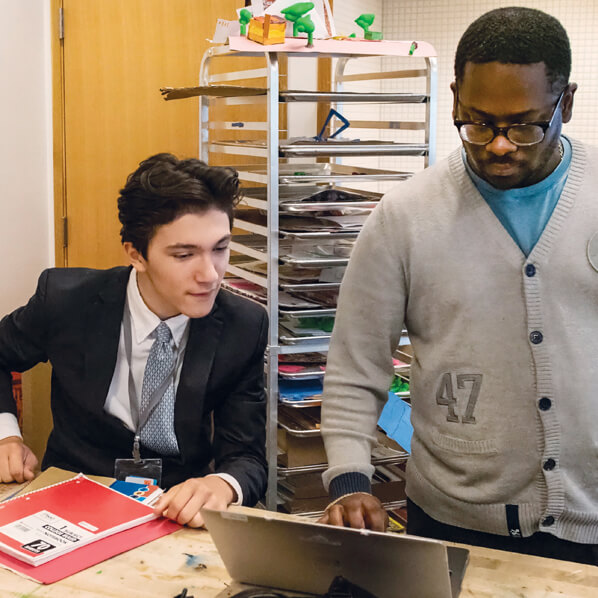
Grades 9 and 10 students take two half-year elective courses in the following:
- Latin
- Forensics
- Epidemiology
- Public Speaking
Note, offerings will change as student demand and faculty expertise grows.

Grades 9 and 10 students take two half-year elective courses in the following:
- Latin
- Forensics
- Epidemiology
- Public Speaking
Note, offerings will change as student demand and faculty expertise grows.


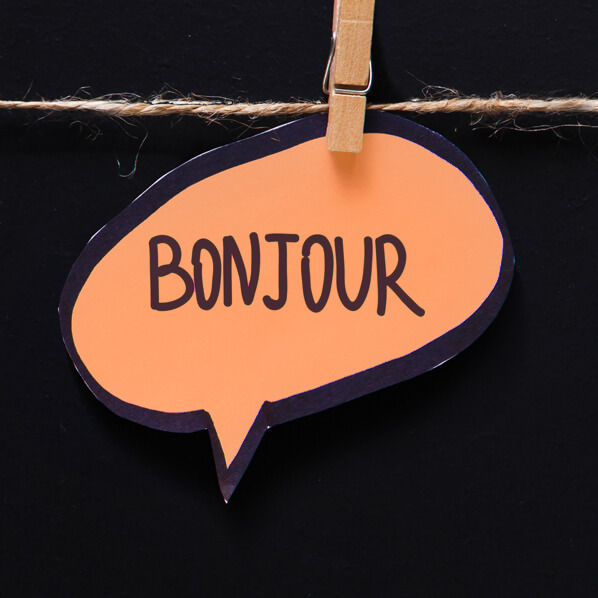
At GEMS world Academy Chicago, all students have a choice of world language starting in preschool. Students select between French, Mandarin, or Spanish and we encourage them to stay with the same language to support true mastery and fluency. We offer the following progression that naturally increases in complexity and challenge at each level; students are placed appropriately based on readiness.
- Novice I: This course is designed to help students begin to communicate with French speakers through written and oral expression. This course integrates language with history, culture, daily life, community, politics, health and our environment. We emphasize interconnectedness, global awareness and the broad movements and patterns of the history of French speakers around the world.
- Novice II: This course reinforces the basics of the French language. Each unit invites students to expand their French vocabulary, search for contextual clues decoding high level literary excerpts and a variety of authentic media resources as well as respond through communicative activities and projects.
- Intermediate I and II: High-level French immersion, writing and speaking practice. Primary sources, authentic French articles, podcasts, media, music and film will be combined with research and field studies to insure students build a foundation in French to prepare for the IB Diploma Program.
- Advanced/Heritage: Designed for first language speakers, this course develops high level speaking, reading and writing skills. Literature and other authentic texts are used to ensure that students are able to express higher order thinking in written and verbal communication.

At GEMS world Academy Chicago, all students have a choice of world language starting in preschool. Students select between French, Mandarin, or Spanish and we encourage them to stay with the same language to support true mastery and fluency. We offer the following progression that naturally increases in complexity and challenge at each level; students are placed appropriately based on readiness.
- Novice I: This course is designed to help students begin to communicate with French speakers through written and oral expression. This course integrates language with history, culture, daily life, community, politics, health and our environment. We emphasize interconnectedness, global awareness and the broad movements and patterns of the history of French speakers around the world.
- Novice II: This course reinforces the basics of the French language. Each unit invites students to expand their French vocabulary, search for contextual clues decoding high level literary excerpts and a variety of authentic media resources as well as respond through communicative activities and projects.
- Intermediate I and II: High-level French immersion, writing and speaking practice. Primary sources, authentic French articles, podcasts, media, music and film will be combined with research and field studies to insure students build a foundation in French to prepare for the IB Diploma Program.
- Advanced/Heritage: Designed for first language speakers, this course develops high level speaking, reading and writing skills. Literature and other authentic texts are used to ensure that students are able to express higher order thinking in written and verbal communication.

Grades 11 and 12 form the IB Diploma Program, in which requirements are all two-year courses where students keep the same teacher for both years.
Students further develop their ability to communicate in French through the study of language, themes and texts. They also develop conceptual understandings of how language works. Knowledge of the what of language (grammar and vocabulary) is reinforced and extended by understanding the why and how of language: audience, context, purpose, meaning. Students expand the range of their communication skills by understanding and producing a wide variety of oral and written texts for audiences, contexts and purposes associated with academic and personal interests. For the development of receptive skills, language B students must study authentic texts that explore the culture(s) of the target language.

Grades 11 and 12 form the IB Diploma Program, in which requirements are all two-year courses where students keep the same teacher for both years.
Students further develop their ability to communicate in French through the study of language, themes and texts. They also develop conceptual understandings of how language works. Knowledge of the what of language (grammar and vocabulary) is reinforced and extended by understanding the why and how of language: audience, context, purpose, meaning. Students expand the range of their communication skills by understanding and producing a wide variety of oral and written texts for audiences, contexts and purposes associated with academic and personal interests. For the development of receptive skills, language B students must study authentic texts that explore the culture(s) of the target language.


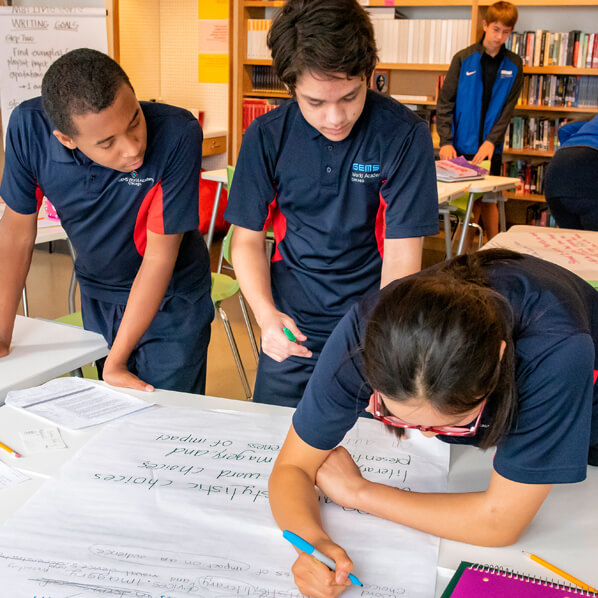
This course is an examination of U.S. history from the Civil War Era to the present day. Examples of units include:
- Civil War - causes and effects of the US Civil War from antebellum years (1820's) through 1865.
- Industrialization, Progressive Era (1870-1920) - Great changes in industrial and technological development, and the changes in culture as society coped with them.
- U.S. Role in World Wars - Balancing isolationism v. global involvement, America wrestles with its role in the world through European and Asian conflicts.
- Civil Rights Era - Who deserves the most of the credit for America’s progress improving the lot of the disposessed: federal government or grass roots activists?
- Superpower/Cold War Era -A look at 45 years in foreign policy as the USA and the Soviet Union fill power vacuums created by WWII.

This course uses specific units as a study of a variety of Social Science themes, including:
- Systems - cases studies of Cuba, Venezuela, and Chicago where economic, social and political systems are examined. Time, Place & Space - We examine the degree to which identity, rather than issues influences voters. We consider gerrymandered electoral districts in Chicago as a current, real-world case study.
- Cooperative Unit with Another High School - Students go beyond the classroom to partner with another city high school for a collaborative project that addresses a need in Chicago such as creation of a youth voter guide in the 2019 mayoral elections.
- Psychology - Students are introduced to the science of studying human behavior. We look at human memory as a case study and see that our remembering is a product of biological, cognitive and social influences.
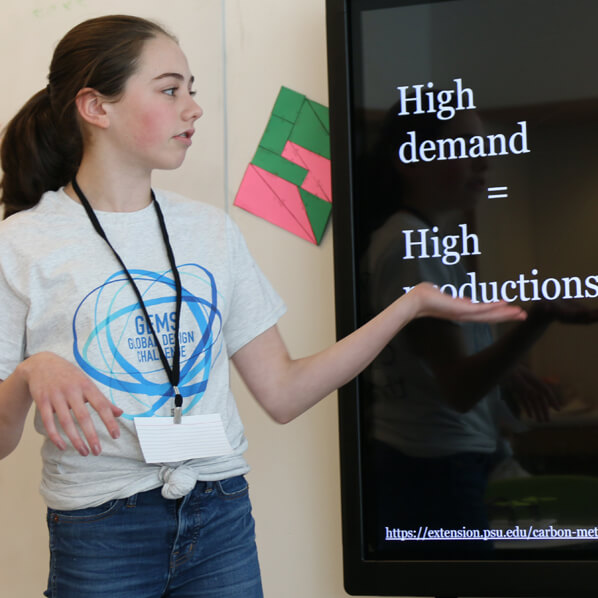
Grades 11 and 12 form the IB Diploma Program, in which requirements are all two-year courses where students keep the same teacher for both years.
The Diploma Programme global politics course explores fundamental political concepts such as power, equality, sustainability and peace in a range of contexts. It allows students to develop an understanding of the local, national, international and global dimensions of political activity and processes, as well as to explore political issues affecting their own lives. The course helps students to understand abstract political concepts by grounding them in real-world examples and case studies. It also invites comparison between such examples and case studies to ensure a wider and transnational perspective.

Grades 11 and 12 form the IB Diploma Program, in which requirements are all two-year courses where students keep the same teacher for both years.
The Diploma Programme global politics course explores fundamental political concepts such as power, equality, sustainability and peace in a range of contexts. It allows students to develop an understanding of the local, national, international and global dimensions of political activity and processes, as well as to explore political issues affecting their own lives. The course helps students to understand abstract political concepts by grounding them in real-world examples and case studies. It also invites comparison between such examples and case studies to ensure a wider and transnational perspective.


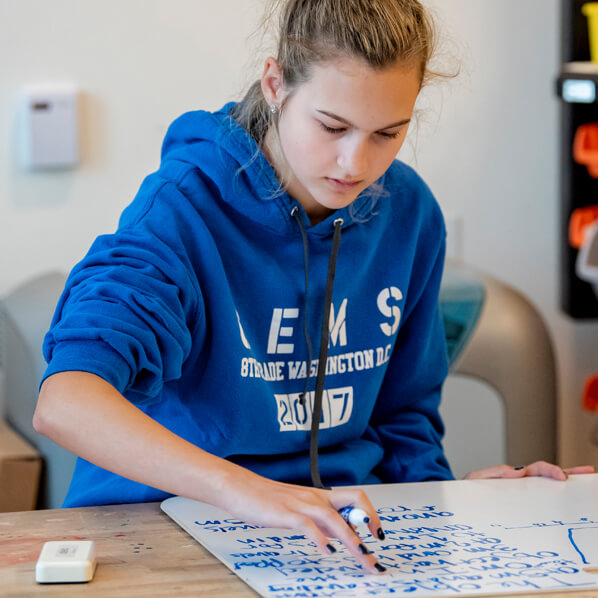
This course provides a college level academic atmosphere that expands students'reading and writing experiences, building a foundation for their high school and post-secondary academic careers. The course will allow students to improve their reading, writing, and communication skills through strategies found in the IB instructional framework including classroom talk, collaborative group work, writing to learn, literacy groups, and questioning. Students will encounter various genres of literature and several styles of writing, with a particular emphasis on Chicago based topics. Students will also be encouraged and expected to integrate technology into several project-based learning assignments in order to practice solving real world problems.

As the culminating year of the MYP Language & Literature program, this course provides students with a strong foundation in inquiry, critical thinking, and textual analysis. Continuing to build upon all the skills built in prior years, students will read, discuss and analyze a variety of texts of different formats from around the world. Summative assessments concentrate on preparing students for the rigor of the IB Diploma Program and will address the IB MYP criteria. Summative tasks include formal literary analysis, presentation tasks, oral commentaries, and argumentative writing. Analysis will be a crucial ongoing focus as we examine and evaluate how authors use stylistic devices and how they impact the audience. Students will also participate in independent reading workshop.

Language & Literature in the Diploma Program, which covers grades 11 and 12, is a two-year course where students keep the same teacher for both years.
In this two-year course, students study a wide range of literary and non-literary texts in a variety of media. By examining communicative acts across literary form and textual type alongside appropriate secondary readings, students will investigate the nature of language itself and the ways in which it shapes and is influenced by identity and culture. Approaches to study in the course are meant to be wide ranging and can include literary theory, sociolinguistics, media studies and critical discourse analysis among others.

Language & Literature in the Diploma Program, which covers grades 11 and 12, is a two-year course where students keep the same teacher for both years.
In this two-year course, students study a wide range of literary and non-literary texts in a variety of media. By examining communicative acts across literary form and textual type alongside appropriate secondary readings, students will investigate the nature of language itself and the ways in which it shapes and is influenced by identity and culture. Approaches to study in the course are meant to be wide ranging and can include literary theory, sociolinguistics, media studies and critical discourse analysis among others.



At GEMS world Academy Chicago, all students have a choice of world language starting in preschool. Students select between French, Mandarin, or Spanish and we encourage them to stay with the same language to support true mastery and fluency
We offer the following progression that naturally increases in complexity and challenge at each level; students are placed appropriately based on readiness.
- Novice I:This is a course geared toward preparing students for the IB Diploma Mandarin course. Each unit is designed around life-related themes to integrate the key facets of foreign language acquisition: linguistic codes, language usage skills, and cultural knowledge. It introduces the Chinese phonetic system, character writing system, basic grammatical structures, and functional daily language use in a real-life related context. The students are expected to get actively involved in daily classroom instruction/activities in the target language to improve their communicative skills. The main goal of this course is to get students interested in the language and the culture and help them succeed in daily functional conversation, reading and writing. Students are encouraged to achieve independent thinking and creative use of the language.
- Novice II:This course provides further development of all language skills: codes, language usage skills, and cultural knowledge. Additionally, students are expected to develop Chinese vocabulary and sentence patterns in communicative contexts, and to build a solid foundation in pronunciation.
- Intermediate:This course provides high level immersion, writing, and speaking practice. Primary sources, authentic articles, podcasts, media, music and film are combined with research and field studies to ensure that students build a foundation to prepare for the demands of the IB Diploma Program.
- Advanced/Heritage: Designed for first language speakers, this course develops high level speaking, reading and writing skills. Literature and other authentic texts are used to ensure that students are able to express higher order thinking in written and verbal communication.

At GEMS world Academy Chicago, all students have a choice of world language starting in preschool. Students select between French, Mandarin, or Spanish and we encourage them to stay with the same language to support true mastery and fluency
We offer the following progression that naturally increases in complexity and challenge at each level; students are placed appropriately based on readiness.
- Novice I:This is a course geared toward preparing students for the IB Diploma Mandarin course. Each unit is designed around life-related themes to integrate the key facets of foreign language acquisition: linguistic codes, language usage skills, and cultural knowledge. It introduces the Chinese phonetic system, character writing system, basic grammatical structures, and functional daily language use in a real-life related context. The students are expected to get actively involved in daily classroom instruction/activities in the target language to improve their communicative skills. The main goal of this course is to get students interested in the language and the culture and help them succeed in daily functional conversation, reading and writing. Students are encouraged to achieve independent thinking and creative use of the language.
- Novice II:This course provides further development of all language skills: codes, language usage skills, and cultural knowledge. Additionally, students are expected to develop Chinese vocabulary and sentence patterns in communicative contexts, and to build a solid foundation in pronunciation.
- Intermediate:This course provides high level immersion, writing, and speaking practice. Primary sources, authentic articles, podcasts, media, music and film are combined with research and field studies to ensure that students build a foundation to prepare for the demands of the IB Diploma Program.
- Advanced/Heritage: Designed for first language speakers, this course develops high level speaking, reading and writing skills. Literature and other authentic texts are used to ensure that students are able to express higher order thinking in written and verbal communication.

Grades 11 and 12 form the IB Diploma Program, in which requirements are all two-year courses where students keep the same teacher for both years.
DP Mandarin is not currently offered based on student demand, but will be offered for the 2020-2021 school year.

Grades 11 and 12 form the IB Diploma Program, in which requirements are all two-year courses where students keep the same teacher for both years.
DP Mandarin is not currently offered based on student demand, but will be offered for the 2020-2021 school year.


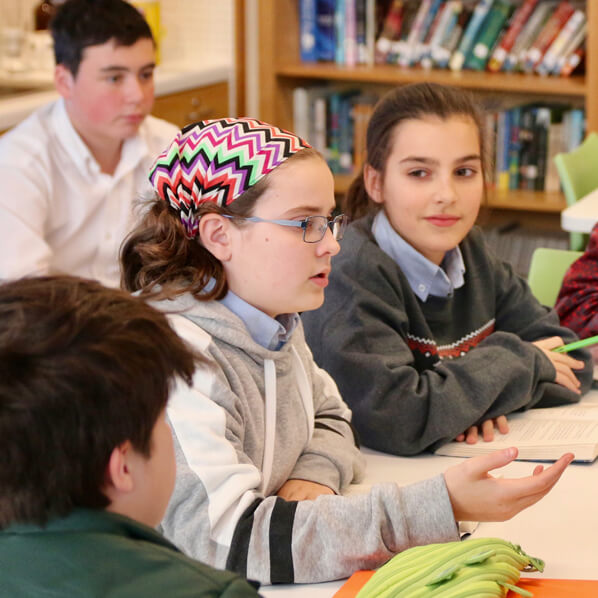
As part of the Diploma Program, students in grades 11 and 12 may take a two-year music course, retaining the same teacher for each of the courses when progressing from grade 11 to 12.
The IB Diploma Program music course provides an appropriate foundation for further study in music at university level or in music career pathways. It also provides an enriching and valuable course of study for students who may pursue other careers. This course also provides all students with the opportunity to engage in the world of music as lifelong participants.

As part of the Diploma Program, students in grades 11 and 12 may take a two-year music course, retaining the same teacher for each of the courses when progressing from grade 11 to 12.
The IB Diploma Program music course provides an appropriate foundation for further study in music at university level or in music career pathways. It also provides an enriching and valuable course of study for students who may pursue other careers. This course also provides all students with the opportunity to engage in the world of music as lifelong participants.


Performing Arts


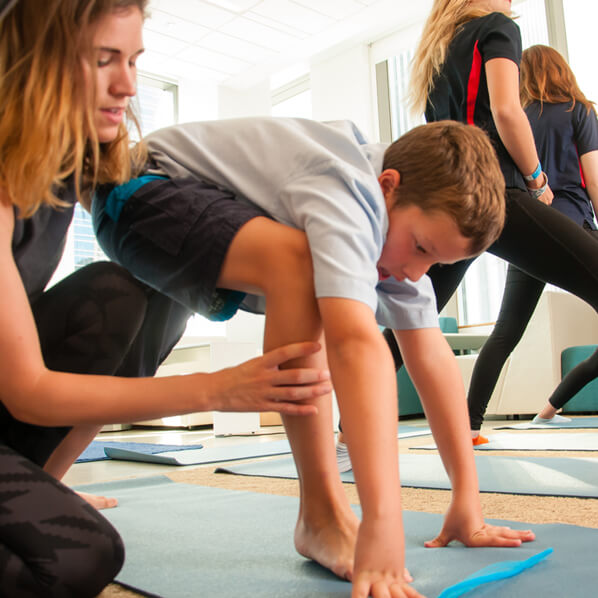
Physical and health education in the first years of Upper School continue to build on student self-assessment, individual and teamwork, and leadership across a variety of sports and activities.

Physical and Health Education in grade 10 prepares students for the Activity requirement of CAS (Creativity, Activity, Service) in the Diploma Program in grades 11 and 12. Students direct their activities, setting goals, choosing sports and designing specific programs.


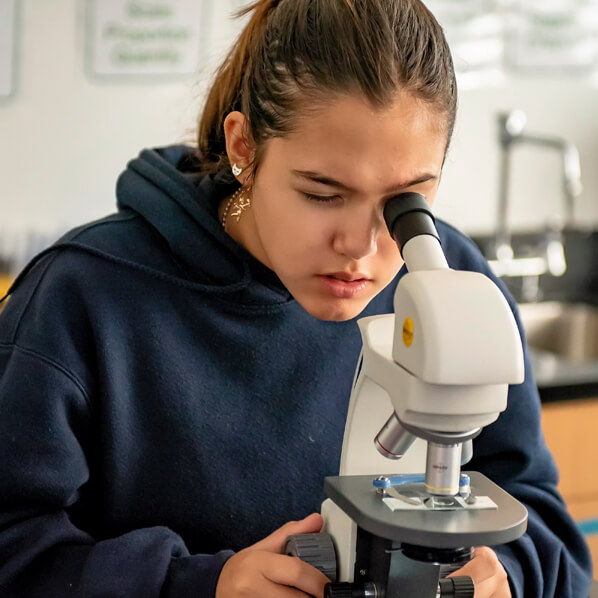
Ninth-grade physics is a course that examines the beginning of mechanics and creates a pathway toward higher order physics. Emphasis is on straight line motion, forces, energy and momentum, circular motion, universal gravitation and other related topics. Upon completion, students should be able to demonstrate preparedness for higher level physics courses. Laboratory exercises focus on integrating technology into the investigations of basic physics principles.

In grade 10, students take two half-year science courses:
- Chemistry: students explore the inorganic and organic principles that promote problem solving through facts, laws and theories of general chemistry. Using the scientific method and student-led inquiry, students study atoms, bonding, acids and bases and biochemistry principles. Laboratory work, data collection and experimentation are essential.
- Biological Life Science examines the beginning of the Krebs Cycle and creates a pathway toward higher order biology. Emphasis is on biological chemistry, cell structure and function, cellular metabolism, genetics, and other related topics. Upon completion of the course, students should be able to demonstrate preparedness for higher level biology courses. Laboratory exercises focus on basic biological principles and microscope techniques.

As part of the Diploma Program, students in grades 11 and 12 study two different sciences simultaneously over the course of two years, retaining the same teacher for each of the curses when progressing from 11th to 12th grade. We currently offer the following courses:
- DP Environmental Systems and Societies (ESS): this course is a college-level introduction to ecology, which is a science applied to ideas connected to economics and the Theory of Knowledge course. We’ll look at the ways different people around the world perceive and respond to various environmental issues, and we will dig deeper into their experiences and motivations for taking action -- or not. The issues students encounter in ESS are complex and challenging. For many of the questions raised, there are no right answers. Students will never be taught what to think about environmental issues; instead, they will learn about the interdependence of the various components of our planet in order to reach their own conclusions. This course is a lab science class.
- DP Physics: In DP physics, students will become aware of how scientists work and communicate with each other. The emphasis in this course is the practical approach through experimental investigations and the clear communication of the experimental findings. Laboratory investigations focus on clear and concise written reports. In year one, students will study mechanics, wave phenomena, and thermodynamics. In the second year, students will study Electricity and Magnetism, atomic, nuclear, and particle physics as well as general relativity.
As our student population grows, we will add the full Diploma Program science courses as offerings.

As part of the Diploma Program, students in grades 11 and 12 study two different sciences simultaneously over the course of two years, retaining the same teacher for each of the curses when progressing from 11th to 12th grade. We currently offer the following courses:
- DP Environmental Systems and Societies (ESS): this course is a college-level introduction to ecology, which is a science applied to ideas connected to economics and the Theory of Knowledge course. We'll look at the ways different people around the world perceive and respond to various environmental issues, and we will dig deeper into their experiences and motivations for taking action -- or not. The issues students encounter in ESS are complex and challenging. For many of the questions raised, there are no right answers. Students will never be taught what to think about environmental issues; instead, they will learn about the interdependence of the various components of our planet in order to reach their own conclusions. This course is a lab science class.
- DP Physics: In DP physics, students will become aware of how scientists work and communicate with each other. The emphasis in this course is the practical approach through experimental investigations and the clear communication of the experimental findings. Laboratory investigations focus on clear and concise written reports. In year one, students will study mechanics, wave phenomena, and thermodynamics. In the second year, students will study Electricity and Magnetism, atomic, nuclear, and particle physics as well as general relativity.
As our student population grows, we will add the full Diploma Program science courses as offerings.


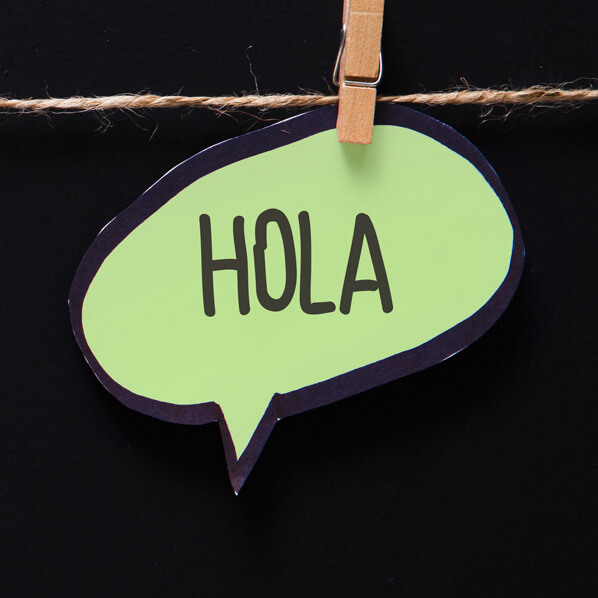
At GEMS world Academy Chicago, all students have a choice of world language starting in preschool. Students select between French, Mandarin, or Spanish and we encourage them to stay with the same language to support true mastery and fluency. We offer the following progression that naturally increases in complexity and challenge at each level; students are placed appropriately based on readiness.
- Novice I: This course is designed to help students begin to communicate with Spanish speakers through written and oral expression, integrating language with history, culture, daily life, community, politics, health and our environment. We emphasize interconnectedness, global awareness, and the broad movements and patterns of the history of Spanish speakers.
- Novice II: As a progression of Novice I, more challenging vocabulary and grammatical (reading and writing) structures are taught in context.
- Intermediate I and II: We continue to develop students'oral (communication), aural (listening), written, and reading competences while expanding prior knowledge of language structure and cultural awareness. Students will learn the World Language standards of communication: Interpersonal (speaking + listening or writing + reading); Interpretive (reading, listening, viewing); Presentational (writing, speaking, visually representing). This language course will challenge students to further acquire linguistic and cultural skills. In the classroom applications we will integrate cultures, make connections and comparisons through global communities while communicating in the target language.
- Advanced/Heritage: Designed for first language speakers, this course develops high level speaking, reading and writing skills. Literature and other authentic texts are used to ensure that students are able to express higher order thinking in written and verbal communication.

At GEMS world Academy Chicago, all students have a choice of world language starting in preschool. Students select between French, Mandarin, or Spanish and we encourage them to stay with the same language to support true mastery and fluency. We offer the following progression that naturally increases in complexity and challenge at each level; students are placed appropriately based on readiness.
- Novice I: This course is designed to help students begin to communicate with Spanish speakers through written and oral expression, integrating language with history, culture, daily life, community, politics, health and our environment. We emphasize interconnectedness, global awareness, and the broad movements and patterns of the history of Spanish speakers.
- Novice II: As a progression of Novice I, more challenging vocabulary and grammatical (reading and writing) structures are taught in context.
- Intermediate I and II: We continue to develop students'oral (communication), aural (listening), written, and reading competences while expanding prior knowledge of language structure and cultural awareness. Students will learn the World Language standards of communication: Interpersonal (speaking + listening or writing + reading); Interpretive (reading, listening, viewing); Presentational (writing, speaking, visually representing). This language course will challenge students to further acquire linguistic and cultural skills. In the classroom applications we will integrate cultures, make connections and comparisons through global communities while communicating in the target language.
- Advanced/Heritage: Designed for first language speakers, this course develops high level speaking, reading and writing skills. Literature and other authentic texts are used to ensure that students are able to express higher order thinking in written and verbal communication.

Grades 11 and 12 form the IB Diploma Program, in which requirements are all two-year courses where students keep the same teacher for both years.
In this two-year course, students further develop their ability to communicate in the target language through the study of language, themes and texts. In doing so, they also develop conceptual understandings of how language works, as appropriate to the level of the course. Knowledge of vocabulary and grammar—the what of language—is reinforced and extended by understanding the why and how of language: audience, context, purpose, meaning. Students expand the range of their communication skills by understanding and producing a wide variety of oral and written texts for audiences, contexts and purposes associated with academic and personal interests. For the development of receptive skills, language B students must study authentic texts that explore the culture(s) of the target language.

Grades 11 and 12 form the IB Diploma Program, in which requirements are all two-year courses where students keep the same teacher for both years.
In this two-year course, students further develop their ability to communicate in the target language through the study of language, themes and texts. In doing so, they also develop conceptual understandings of how language works, as appropriate to the level of the course. Knowledge of vocabulary and grammar—the what of language—is reinforced and extended by understanding the why and how of language: audience, context, purpose, meaning. Students expand the range of their communication skills by understanding and producing a wide variety of oral and written texts for audiences, contexts and purposes associated with academic and personal interests. For the development of receptive skills, language B students must study authentic texts that explore the culture(s) of the target language.


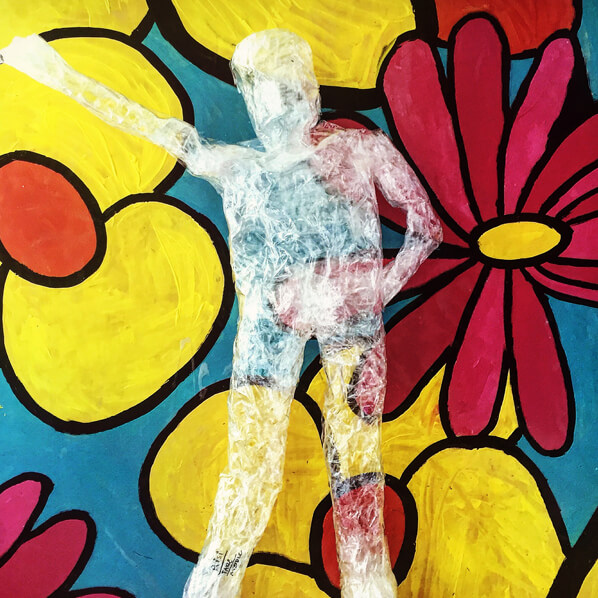
Students in grades 9 and 10 may choose to concentrate in one or more of the performing or visual arts. Open studio in Visual Arts, theater, dance, orchestra and chorus may all be selected as 1 or 2 semester explorations. In grades 9 and 10 visual arts, students drive their own personal exploration of art with various units designed to deepen understanding of art across cultures, forms and functions. Open studio time allows for deep reflection, experimentation and exploration.

Students in grades 9 and 10 may choose to concentrate in one or more of the performing or visual arts. Open studio in Visual Arts, theater, dance, orchestra and chorus may all be selected as 1 or 2 semester explorations. In grades 9 and 10 visual arts, students drive their own personal exploration of art with various units designed to deepen understanding of art across cultures, forms and functions. Open studio time allows for deep reflection, experimentation and exploration.

As part of the Diploma Program, students in grades 11 and 12 may take a two-year visual arts course, retaining the same teacher for each of the courses when progressing from grade 11 to 12.
The IB Diploma Program visual arts course encourages students to challenge their own creative and cultural expectations and boundaries. It is a thought-provoking course in which students develop analytical skills in problem-solving and divergent thinking, while working towards technical proficiency and confidence as art-makers. In addition to exploring and comparing visual arts from different perspectives and in different contexts, students are expected to engage in, experiment with and critically reflect upon a wide range of contemporary practices and media. The course is designed for students who want to go on to study visual arts in higher education as well as for those who are seeking lifelong enrichment through visual arts.

As part of the Diploma Program, students in grades 11 and 12 may take a two-year visual arts course, retaining the same teacher for each of the courses when progressing from grade 11 to 12.
The IB Diploma Program visual arts course encourages students to challenge their own creative and cultural expectations and boundaries. It is a thought-provoking course in which students develop analytical skills in problem-solving and divergent thinking, while working towards technical proficiency and confidence as art-makers. In addition to exploring and comparing visual arts from different perspectives and in different contexts, students are expected to engage in, experiment with and critically reflect upon a wide range of contemporary practices and media. The course is designed for students who want to go on to study visual arts in higher education as well as for those who are seeking lifelong enrichment through visual arts.


It’s an honor being a GEMS parent and seeing my son experience the world face-to-face in his education.
We put a lot of time and research into finding the best possible school environment for our daughter, and every day confirms that we made the right choice by choosing GEMS World Academy.



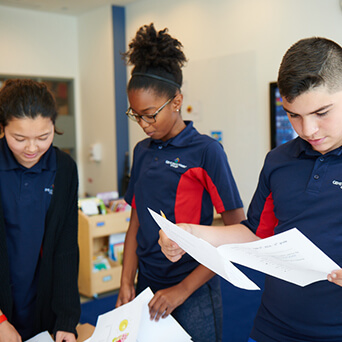
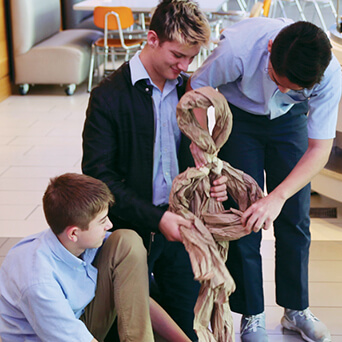
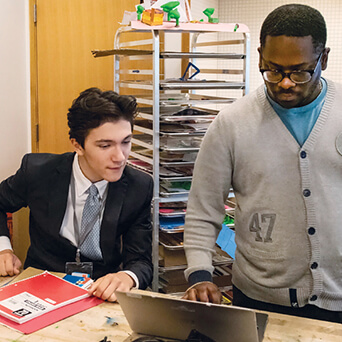
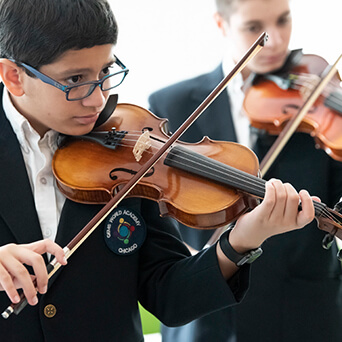
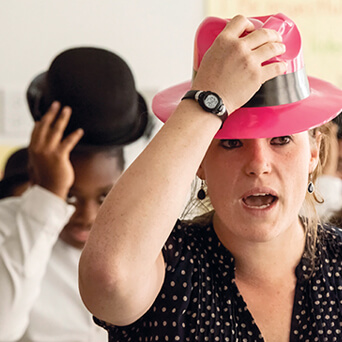
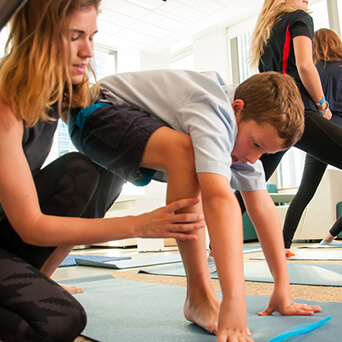
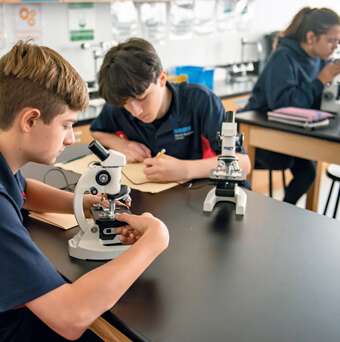

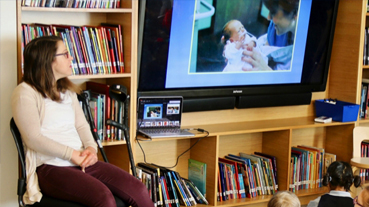
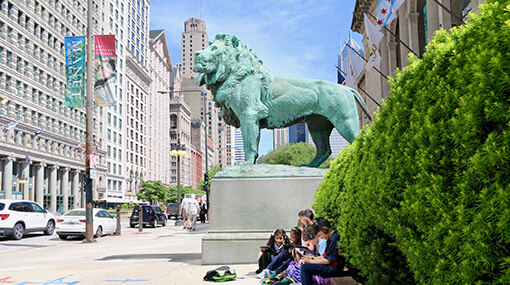
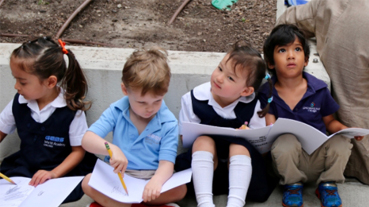

 For an optimal experience, please<br> rotate your device to portrait mode.
For an optimal experience, please<br> rotate your device to portrait mode.